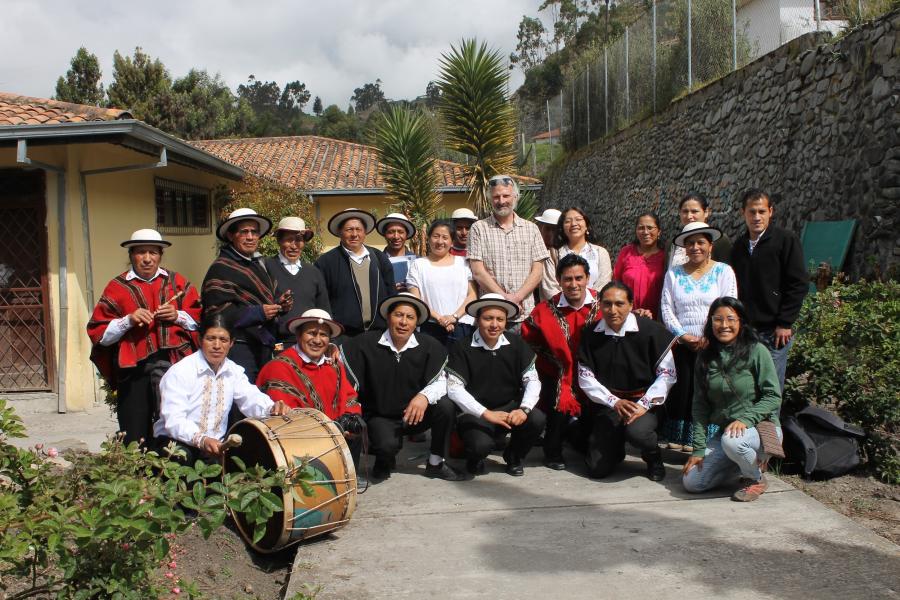Imagine a tree so large and resilient that its greatest threat is not climate change, disease, or deforestation, but only the nuisance of an elephant looking for water. The baobab (BOUGH-bob) tree is known for its size and spiritual significance in many African cultures. Also known as the monkey-bread tree, the upside-down tree, and the tree of life, it produces a tasty and nutritious fruit, the dried pulp of which has recently been approved as a novel food import by the European Union. Indigenous to many parts of southern Africa as well as Senegal, baobab fruit is a traditional snack for children on their way home from school, a dietary supplement for pregnant women, and a refreshing beverage similar to lemonade known as bouye. It can also be used medicinally, as it has been for centuries, to alleviate stomachaches, fevers, and malaria. One UN study showed that an aqueous baobab solution proved more effective in rehydrating children with severe cases of diarrhea than standard World Health Organization remedies.
Whispers of this new superfruit are spreading through the European food niches, but it is hardly new for indigenous peoples. With a trunk that can reach 60 feet in circumference and 90 feet in height, and a lifespan of more than 500 years, the baobab has been a spiritual symbol in Senegalese and southern African cultures for as long as the trees have grown. Depending on the size of a community, there may be a couple of trees in any given town that people look to for spiritual connection. Dead relatives are buried at the base of these trees, where it is believed that the baobabs become imbued with their souls. It is fitting, then, that the fruit is used to bring high quality nourishment to the living. Amid growing concerns about climate change affecting indigenous lands, the baobab is likely to resist the warming of the earth. It grows in hot, arid climates and is also known as the bottle tree, or the tree of life, for its ability to store up to 1,200 gallons of water in its trunk. Elephants often strip the baobab’s bark in an effort to retrieve the moist wood, but its bark regenerates easily.
For humans, it’s the fruit that’s of most interest, and for good reason. The six- to eight-inch-long seed pods have a pulp with six times more vitamin C than an orange, 50 percent more calcium than spinach, and enough flavor to keep any simple dish from tasting bland. It is used in cultures with no history of writing down recipes, so there is no grandmother’s secret for baobab-flavored porridge, or baked baobab and fish. On the other hand, it’s enormously flexible and can be used in any way that the cook desires. “It tastes like a mix between grapefruit and tamarind,” says Lucy Welford of the nonprofit group PhytoTrade, which was a main lobbying force for the baobab and which submitted the application for the dried fruit pulp to be approved by the EU.
The power of the baobab fruit’s potential lies in the simplicity of the harvesting skills required. All you need is a pair of hands. To gather the fruit pulp, just crack open the velvety outer shell, remove the seeds, and mill the pulp into small particles. Because the harvesting is so simple and the benefits of the fruit so abundant, PhytoTrade saw an untapped potential in the African woodlands and began its nonprofit program to support rural communities in selling baobab products. PhytoTrade partners with nine commercial fruit distributors, such as Baobab Fruit Company Senegal. Those distributors agree to purchase the fruit only from 58 rural suppliers, mostly in Malawi, and they must meet PhytoTrade’s health and processing standards. These commercial partners also agree to keep their business fair trade, although no legal standards exist yet. And it’s becoming a substantial business: the Baobab Fruit Company alone employs more than 1,000 collectors and processing-plant workers in the southwest Tambacounda region of Senegal for each harvest season, producing nearly 200 tons of raw baobab materials for dietary and cosmetic use.
The new fruit business is also having an impact on an artisanal level. Indigenous women are harvesting the fruit (both baobab and other indigenous fruit trees) and producing jam, juice, and wine, which they sell locally. These women, now financially independent from their husbands, sometimes choose to use the money for better food and health care for their families, or to send their children to school with fresh uniforms. “It empowers women to make decisions they weren’t able to make before,” says Welford.
To learn more about the social impacts of the new fruit business, in 2006 Tanzanian agroforestry researcher Peter Allen Oduol and his colleagues interviewed indigenous people across Tanzania. Mwadawa Luziga, from Mbola village, was one of those people. As Oduol describes in a paper he delivered at the second National Agroforestry and Environment Workshop, Luziga and other women from the area showed their jam, juice, and wine products at the Dar es Salaam International Trade Fair, where, she said, “Our products sold out. We realized that people are interested in our products, how we urgently need a shop to display and sell our products. In addition we need proper packaging materials and labels so that we can be competitive.”
Stella Sichinga, from Tumbi, explained how the fruit business fits into her life comfortably. “I use local resources, which are not expensive and are within my income. The recipe includes lemon peels, lemon juice, sugar, and clean boiled water. The whole process is done in my own house. I usually make about 50 liters of juice per day, which fetches about Tsh 20,000 [US$20]. I have managed to buy a big fridge, which helps me in my business, and upgraded my kitchen equipment for my own use and for processing. I even bought a sofa set.”
Women in these Tanzanian regions are now earning $12 to $30 a day; they have bank accounts and, for the first time, are saving money. They are also learning the challenges inherent in running a business. “My future plans,” Sinchinga says, “are to start a small-scale processing plant using modern equipment and to sell my products beyond Tabora. My advice to other women is that this is a profitable enterprise that can be done by everyone without major problems, to generate income. I urge them to pick up the trade, as it will improve their life.”
It will also improve the environment. The profit potential in baobab means that people are preserving their woodlands instead of cutting the trees for fuel and farming space. With this new trade agreement for baobab pulp, the UK-based Natural Resources Institute estimates the fruit could be worth up to $1 billion a year for African producers, bringing jobs to 2.5 million households across the baobab-producing countries. That gives a whole new meaning to the name “tree of life.”



